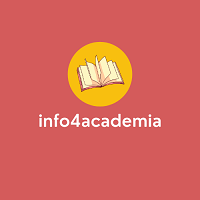Increase Financial Capital of Top Glove in Order to Improve Environment and Sustainability: The Case of Top Glove
Abstract
Full Text:
PDFReferences
Websites • Union of Concern Scientist. (14th July 2008). “Benefits of Renewable Energy Use.†Retrieved from: https://www.ucsusa.org/resources/benefits-renewable-energy-use • Top Glove Corporation Berhad. (2019). “Environment.†Retrieved from: https://www.topglove.com/environment/ • Top Glove Corporation Berhad. (2019). “Economic.†Retrieved from: https://www.topglove.com/economic/ • Victoria Duff. (12th February 2019). “Importance of Finance & Its Role Within Business.†Retrieved from: https://smallbusiness.chron.com/importance-finance-its-role-within-business1513.html • Jean Murray. (25th June 2019). “What is a Joint Venture and How Does It Work?†Retrieved from: https://www.thebalancesmb.com/what-is-a-joint-venture-and-how-does-it-work397540 • Lisa Smith. (7th May 2019). “Why Companies Issue Bonds?â€
Retrieved from: https://www.investopedia.com/articles/investing/062813/why-companies-issuebonds.asp • Kimberly Amadeo. (25th June 2019). “Financial Capital, Its Types, and Its Critical Role in the Economy.†Retrieved from: https://www.thebalance.com/what-is-financial-capital-3305825 • Wanda Thibodeaux. (2nd November 2018). “Advantages & Disadvantages to Issuing Bonds in Order to Raise Capital.†Retrieved from: https://pocketsense.com/advantages-disadvantages-issuing-bonds-order-raisecapital-3899.html • Prowse Chowne LLP Team. (14th June 2017). “Benefits and Risks Associated with Joint Ventures.†Retrieved from: https://prowsechowne.com/benefits-and-risks-associated-with-joint-ventures/
Journal • Randa I. Sharafeddine. (2016). “Financial Capital an Entrepreneurial Factor of Production.†American Journal of Economic. • Phebe Asantewaa Owusuu and Samuel Asumadu-Sarkodie. (4th April 2016). “A review of renewable energy sources, sustainability issues and climate change mitigation. Journal Cogent Engineering.†Volume 3. • DongmingRen, YongqiangZhao and JingliShi. (2016). “Proposal on Large-Scale Wind Power Transmission and Accommodation Supporting Policy.†Pages 227228. Journal Science Direct. • Mukesh Doble, Anil Kumar Kruthiventi. (2007). “Green Electricity. Alternate Energy Sources.†Pages 171-192. Journal Green Chemistry and Engineering. • Leung, K. (2006), “Effective conflict resolution for intercultural disputesâ€, in Garling, T., Backenroth-Ohsako, G. and Ekehammar, B. (Eds), Diplomacy and Psychology: Prevention of Armed Conflict after the Cold War, Marshall Cavendish Academic, Singapore, pp. 254-272. • Girmscheld, G. and Brockmann, C. (2010), “Inter- and intraorganizational trust in international construction joint venturesâ€, Journal of Construction Engineering and Management, Vol. 136 No. 3, pp. 353-360.
DOI: https://doi.org/10.32535/ijafap.v3i1.730
Refbacks
- There are currently no refbacks.
Copyright (c) 2020 Michelle Zi Ying Wu, Daisy Mui Hung Kee, Yuan Kun Loo, Shie Jie Goh, Hani Jumah Alyanbaawi

This work is licensed under a Creative Commons Attribution 4.0 International License.
International Journal of Accounting and Finance in Asia Pacific (IJAFAP)
ISSN 2684-9763 (Print) | ISSN 2655-6502 (Online)
DOI Prefix: 10.32535 by CrossRef
Published by AIBPM Publisher
JL. Kahuripan No. 9, Hotel Sahid Montana, Malang, Indonesia
Email: adm.ijafap@gmail.com
Phone: +62 341 366222
Website: https://ejournal.aibpmjournals.com/index.php/IJAFAP
Governed by
Association of International Business and Professional Management
Email: admin@aibpm.org
Website: https://www.aibpm.org/
Licensing Information

International Journal of Accounting and Finance in Asia Pacific (IJAFAP) is licensed under a Creative Commons Attribution-NonCommercial-ShareAlike 4.0 International License.
















